 W
WJosé Francisco de San Martín y Matorras, known simply as José de San Martín or El Libertador of Argentina, Chile and Peru, was an Argentine general and the prime leader of the southern and central parts of South America's successful struggle for independence from the Spanish Empire who served as the Protector of Peru. Born in Yapeyú, Corrientes, in modern-day Argentina, he left the Viceroyalty of the Río de la Plata at the early age of seven to study in Málaga, Spain.
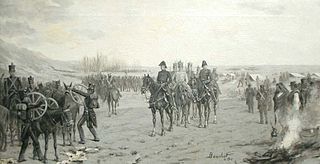 W
WThe Army of the Andes was a military force created by the United Provinces of the Río de la Plata (Argentina) and mustered by general José de San Martín in his campaign to free Chile from the Spanish Empire. In 1817, it crossed the Andes Mountains from the Argentine province of Cuyo, and succeeded in its objective by dislodging the Spanish from the country.
 W
WThe Crossing of the Andes was one of the most important feats in the Argentine and Chilean wars of independence, in which a combined army of Argentine soldiers and Chilean exiles invaded Chile leading to Chile's liberation from Spanish rule. The crossing of the Andes was a major step in the strategy devised by José de San Martín to defeat the royalist forces at their stronghold of Lima, Viceroyalty of Perú, and secure the Spanish American independence movements.
 W
WThe Curved saber of San Martín is an historic weapon used by José de San Martín.
 W
WMaría de los Remedios de Escalada y La Quintana -commonly known as Remedios de Escalada- was the wife of the leader of the Argentine War of Independence, General José de San Martín.
 W
WThe flag of the Andes was a flag used by Argentine patriot José de San Martín and his Army of the Andes during their famous Crossing of the Andes and their subsequent military campaigns to Chile and Peru. The flag of the Andes was personally designed by San Martín and sewn by ladies from the Cuyo region and wives of San Martín's officers. It includes a proto-coat of arms of Argentina placed horizontally over a sky-blue and white bicolor background.
 W
WThe Guayaquil Conference was a meeting that took place on July 26, 1822, in Guayaquil, Ecuador, between José de San Martín and Simón de Bolívar, to discuss the future of Perú.
 W
WHistoria de San Martín y de la emancipación sudamericana is a biography of José de San Martín, written by Bartolomé Mitre in 1869. Along with his biography of Manuel Belgrano, it is one of the earliest major works of the historiography of Argentina.
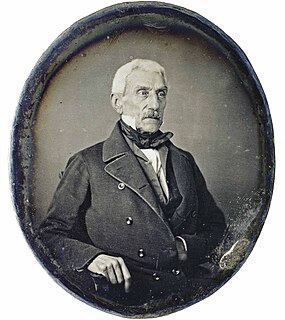 W
WThe later life of José de San Martín documents the life of San Martín after his retirement from the Spanish American wars of independence. He met Simón Bolívar at the Guayaquil conference, resigned from his political offices in Peru and handed him the command of the Army of the Andes. San Martín returned to Argentina, and then left for Europe. He spent his later life in France, and died in Boulogne-sur-Mer on August 17, 1850.
 W
WJosé de San Martín was an Argentine-born general who moved to Spain during his childhood. He served in the Spanish army from 1789 to 1811. During that time he fought among Spanish forces under siege by Moors, in a naval battle against the British navy and in the Peninsular War. In 1795 he was promoted to second lieutenant and during the Peninsular War he reached the rank of Lieutenant Colonel. However, San Martin ended up resigning his position and moved briefly to Britain, and then to Buenos Aries. In 1811, he participated in the Spanish American wars of independence.
 W
WThe Order of the Liberator General San Martin is the highest decoration in Argentina. It is awarded to foreign politicians or military, deemed as worthy of the highest recognition from Argentina. It is granted by the sitting President of Argentina.
 W
WThe Regiment of Mounted Grenadiers is the name of two Argentine Army regiments of two different time periods: a historic regiment that operated from 1812 to 1826, and a modern cavalry unit that was organized in 1903. The first Regiment of Mounted Grenadiers, formed in 1812, fought in the Argentine War of Independence under José de San Martín, and the Cisplatine War, subsequently becoming the Presidential bodyguard in 1825. Refusing to replenish its membership with soldiers who had not fought in the Argentine War of Independence, the regiment disbanded in 1826.
 W
WThe Battle of San Lorenzo was fought on 3 February 1813 in San Lorenzo, Argentina, then part of the United Provinces of the Río de la Plata. A Spanish royalist force under the command of Antonio Zabala was defeated by the Regiment of Mounted Grenadiers, under the command of José de San Martín. This battle was the baptism by fire for this military unit, and for San Martín in the Spanish American wars of independence.
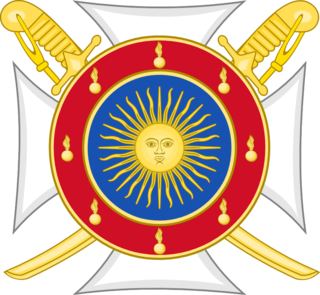 W
WThe San Martín National Institute is a cultural foundation in Buenos Aires dedicated to the legacy of General José de San Martín, the Liberator of Argentina, Chile, and Perú.
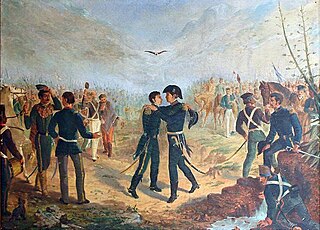 W
WThe Yatasto relay was the handover of the command of the Army of the North by Manuel Belgrano to José de San Martín, in January 1814, during the Argentine War of Independence. It is named after the Yatasto relay, a horse relay at the modern Salta Province, but modern historians consider it could have taken place elsewhere.
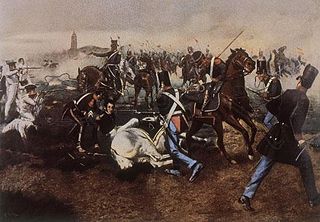 W
W W
W W
W W
W